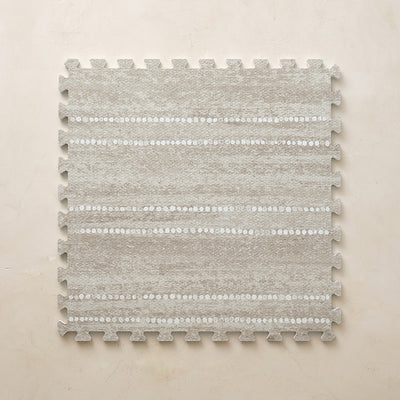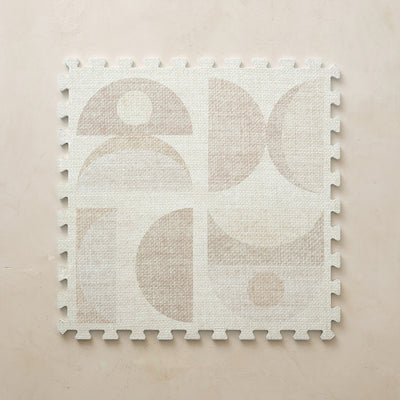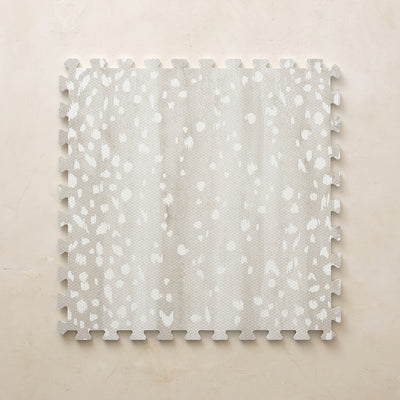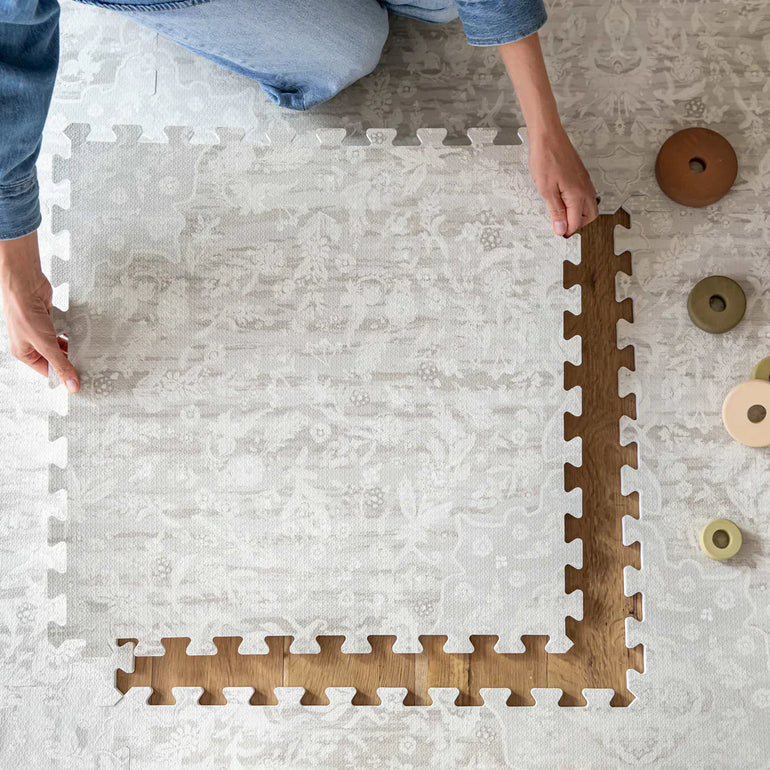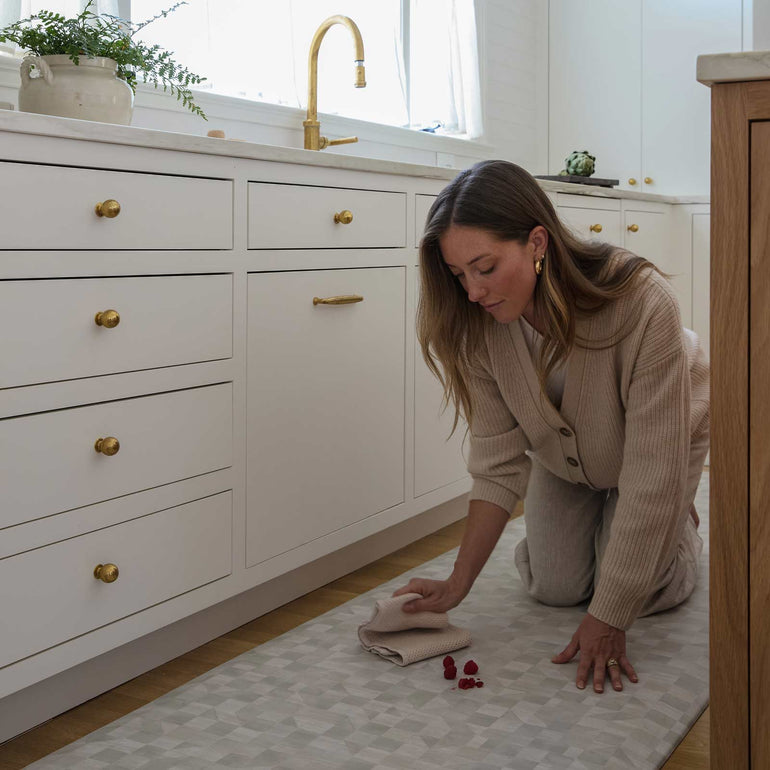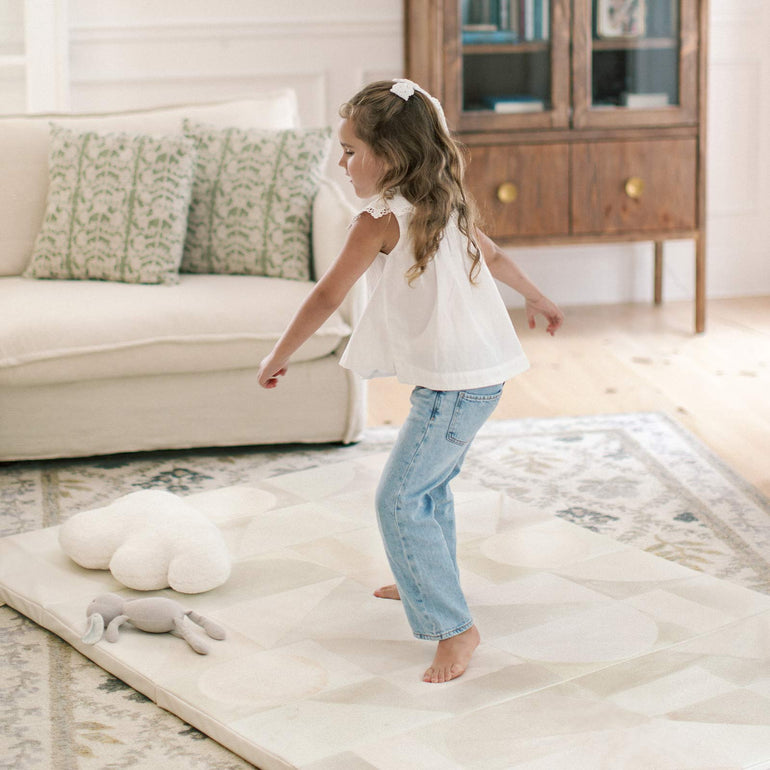Whether it’s the complaints of your feet, legs or back that demand it, you have found yourself in the market for an anti fatigue mat. And If the term “anti fatigue mat” conjures images of scuffed black, barely cushioned, odorous rubber eye sores, it’s time to take note. The good news: there are some really great (really beautiful!) options to suit your needs. The bad news: not all anti fatigue mats are created equal, so it pays to do a little homework. Here’s what you need to know and consider before buying.

1. Take the pressure off. Softness with structure is the magic formula that eases the pain and strain of standing for long periods of time on an anti fatigue mat. But not every mat gets it right—too soft and muscles get overtired stabilizing your posture, too firm and joints absorb all the pressure. Seek a squishy-but-sturdy balance like the standing mat from House of Noa, described as feeling like standing on a zillion gummy bears.
2. Look for low maintenance. Find an anti fatigue mat that doesn’t require a laundry list of proper care. Look for water resistant options that can be cleaned with simple all purpose cleaners or dish soap.
3. Place them where they matter most. Investing in an anti fatigue mat in all the areas you find yourself standing for periods of time is an investment in your overall health. Think under standing desks, next to workbenches, in laundry rooms and kitchens, and underfoot at professions like cashiering or hair and makeup styling.

4. Size matters. Once you’ve determined where you need an anti fatigue mat, think about what size makes most sense. Factor in not only your movement in the space, but also the proportions of the furniture too. Each product features a size guide which is a perfect tool for guiding you to the ideal size for your space.
5. Avoid a slip up. Keep in mind that anti fatigue mats are not recommended next to showers and tubs as they can be slippery with too much water. Prevent slipping in other areas by wiping spills with a dry cloth.
6. Don’t sacrifice your style. Gone are the days when anti fatigue mats were the nursing shoe equivalent of floor mats—practical but not pretty. Today you can find Instagram-ready anti fatigue mats in a wide range of designs to suit virtually every aesthetic and context. Your grandmother may have had to give in and buy that scuffed, rubbery eyesore, but you don’t!

